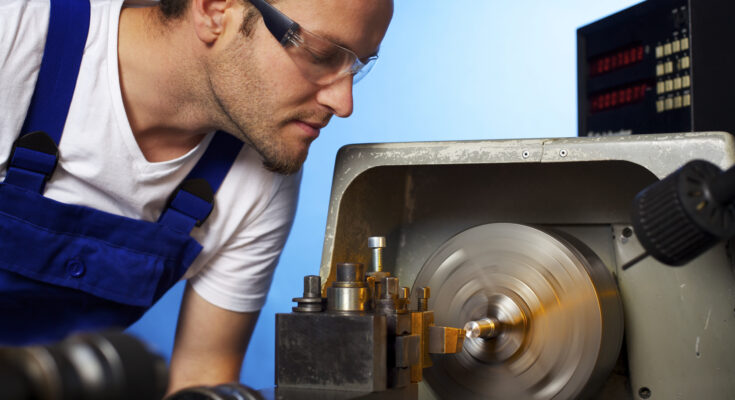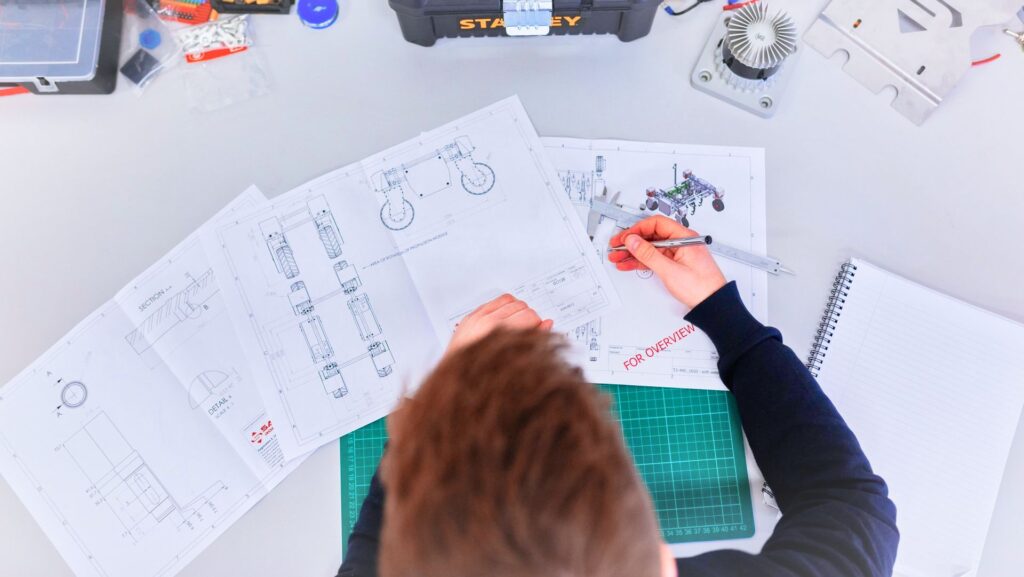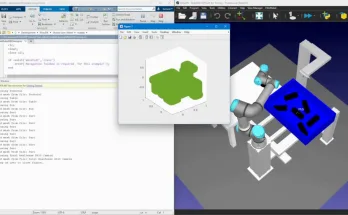Turning machines are a core tool in any machine shop.
While certain automated machines have been available for turning for years, automation has not been accessible to everyone. Until recently, it only made sense to add automation if you had large batch sizes. If not, you were stuck with a manual operation.
Robotic automation has changed all that.
There are now more opportunities than ever before to add automation to your turning applications.
Even if you are operating in a high-mix, low volume environment, you can automate your turning machines to improve their productivity by adding a robot to your process.
Why Automate: Are Turning Machines Only for One-Off Batches?
Some people think that automation is only suitable when you’re working with very large batches. If a shop’s turning machine is used for many different tasks every week, people assume that automation wouldn’t make sense financially or operationally.
If you are working in a machine shop environment, your turning machines are likely used for one-off batches. Perhaps your CNC lathe only runs the same type of job for a few hours every time.
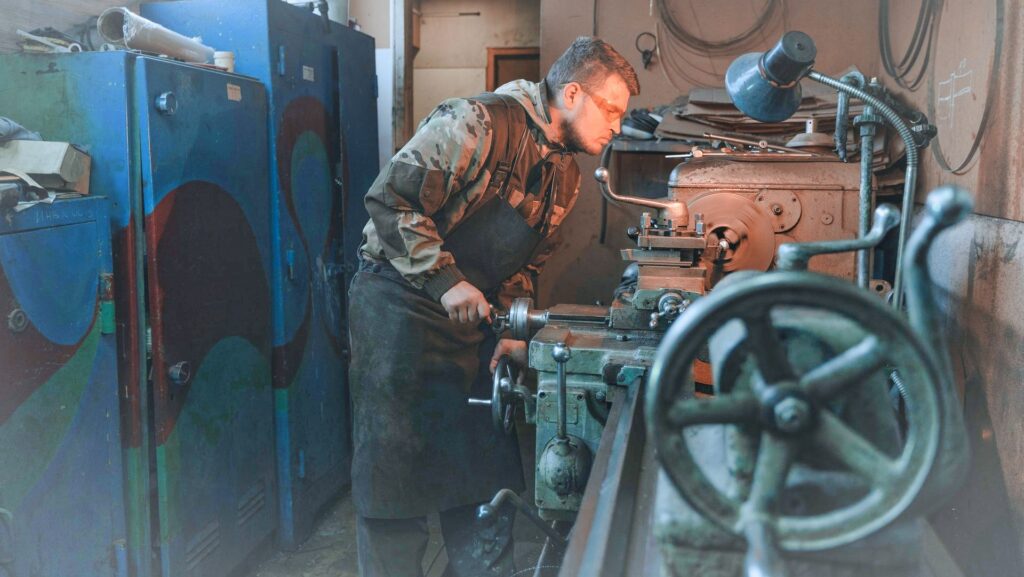
But, even when your batch sizes are low, there are benefits to adding robotic automation.
Such benefits include:
- Human workers can move to more value-added tasks.
- Turning operations become more scalable. Producing, say, a dozen parts takes no more hands-on work than producing, say, 200.
- The quality of produced work is more consistent.
- Your overall turning process is more productive.
When You Should Automate a Turning Machine With a Robot
If you are already thinking that automation could be beneficial for your turning operations, you’re probably right.
According to specialists in turning automation, a good rule of thumb is that robotic automation is profitable if the batch size is big enough to run unmanned for one hour.
For most turning operations, one hour doesn’t amount to many parts in a batch.
Look for one of your existing turning operations that often experiences larger batch sizes and you have likely found a good candidate for robotic automation.
There may be several different opportunities to automate turning machines in your business. Once you have identified and deployed your first application, it takes much less time and effort to deploy subsequent turning applications.
The Basic Approach: Tending a Turning Machine
If you’re looking for a simple approach to increase the automation of an existing turning machine, the easiest way to start is machine tending.
With machine tending, the robot takes over the task that was previously done by a human — i.e. loading and unloading the CNC turning machine.
The advantage of this approach is that it allows you to continue using your existing turning processes and machines. The disadvantage is that it’s not as flexible as using robotic machining.
5 Steps to Set Up Machine Tending for Turning
Here are some practical steps to use a robot to tend a turning machine:
- Load a model of your turning machine into your robot programming software. You can either use a detailed CAD model of the machine obtained from the manufacturer or you can approximate the machine using a simplified model. Both will work just as well from a robot programming perspective.
- Pick your robot from the Robot Library.
- Add an end effector to the robot, either from the library or add a custom end effector. This will likely be some sort of gripper to pick up the workpiece.
- Program the loading and unloading motions using the software’s programming interface.
- Export the program to the robot using the relevant post-processor.
The Complete Approach: Full Robotic Turning Machines
A more complete approach to turning machine automation is to use the robot itself in place of a conventional turning machine.
Robotic machining is a newer approach to machine shop automation and has some benefits over conventional CNC machines including more flexible machining, larger workspaces, and better affordability.
Unlike with machine tending, you need to make sure that the robot model you are using has adequate stiffness to handle the high forces and vibrations that will be applied during the turning task.
5 Steps to Set Up a Robotic Turning Application
Here are some practical steps to using robotic turning:
- Load a model of your external axis into your robot programming software. This will rotate and hold the workpiece. There are a few of these in the Robot Library already but you can also add a new model easily.
- Pick your robot from the Robot Library.
- Add your machining spindle end effector to the robot in the simulation.
- Use the software’s Machining Tool to automatically create machining paths.
- Export the program to the robot using the relevant post-processor.
How to Deploy Your Robotic Turning Machine Quickly
One key to deploying your robotic turning application quickly is to use the right approach to programming.
The processes outlined above rely on you using a tool that makes programming easy.
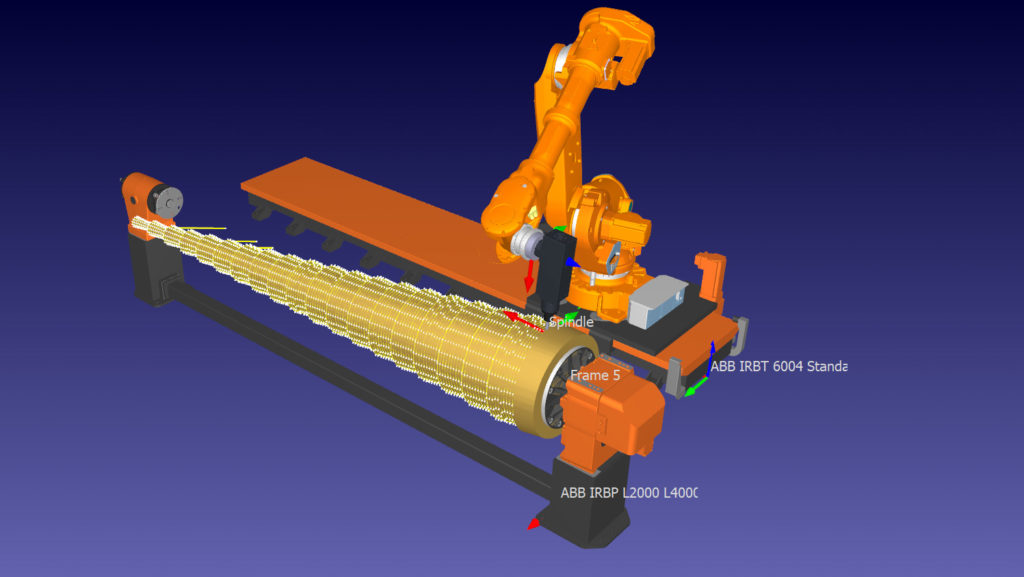
With the conventional approach to robot programming, the process is often complex and requires extensive expertise. This makes the deployment harder than is necessary.
However, with the right offline programming software, you have the benefit of dedicated robot machining tools that make the whole process simple.
You can find our in-depth video tutorial on robotic machining on our documentation page.
What turning task would you like to automate? Tell us in the comments below or join the discussion on LinkedIn, Twitter, Facebook, Instagram, or in the RoboDK Forum.

